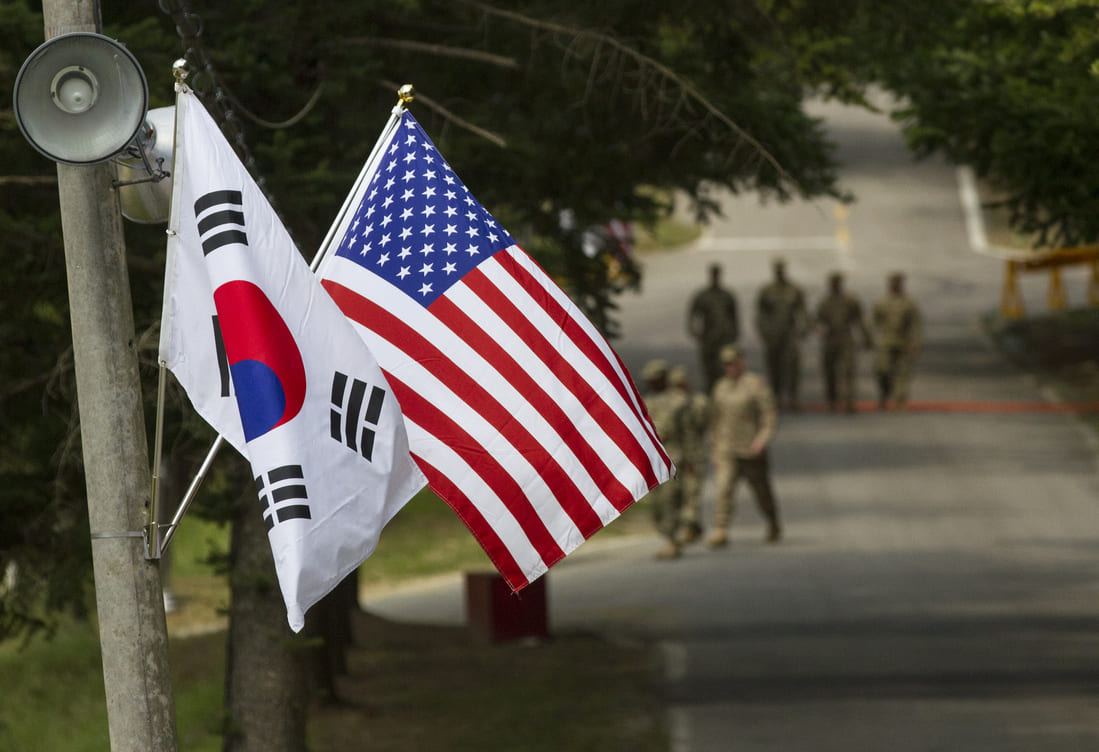South Korean President Lee Jae-myung is heading to Washington on August 25 for his first face-to-face with U.S. President Donald Trump since winning June’s snap election. The two leaders are expected to strengthen the 72-year-old defense alliance and wrap up a July trade deal that lowers U.S. tariffs on Korean goods to 15%. That agreement also sets the stage for at least $350 billion in South Korean investment and $100 billion in U.S. energy exports.
Officials from both countries say the meeting should lock in clear tariff terms and set goals for sharing the costs of keeping 28,500 U.S. troops stationed south of the DMZ.
Defense sources say the summit will focus on extended deterrence, joint military exercises, and funding plans that support the U.S. military presence in Northeast Asia. Lee’s team says any decision about troop numbers must go through the Combined Forces Command, not be announced politically. Trump’s aides are pushing for South Korea to raise defense spending from the current 2.6% of GDP to around 3.8%, a figure recently shared with Congress.
While there’s no official plan to reduce troop numbers, both sides admit they’ve discussed possibly moving some aviation units to Guam or Okinawa. But they say nothing’s happening unless a joint study looks at the cost, reaction times, and local support. The upcoming Ulchi Freedom Shield 25 exercise, running from August 18 to 28, will offer useful data-especially on how new cyber and space drills fit into traditional infantry and armor training.
South Korea wants longer-term budgets to avoid yearly spending spikes that mess with salaries, maintenance, and shipbuilding. The U.S. prefers one-year budgets to keep negotiation leverage. A draft deal would set a five-year funding plan with increases tied to GDP growth, only reopening the numbers if exchange rates shift more than 10% for three straight quarters. Finance officials on both sides support this setup for its stability, especially in bond markets, without locking in spending limits.
North Korea is staying quiet, but still making its presence felt. July’s missile tests and threats to “pre-empt any hostile act” have kept both sides on edge. Even so, Washington and Seoul aren’t planning to share any military details in their official statement.
The final text is expected to reference nuclear consultation mechanisms in a single clause and leave launch authority unchanged. That kind of vague language is meant to show they’re on the same page – without giving away any actual game plan.
The new tariff baseline is set at 15% for most major sectors
Trump’s July announcement scaled down the planned 25% across-the-board tariff to 15% for most Korean goods. Automobiles, electronics, and pharmaceuticals saw immediate relief, while steel and base metals were excluded from the final terms. Korean exporters welcomed the change, saying it brings them in line with Japanese and EU competitors and avoids shifting production back home or to Mexico.
The deal includes several high-profile commitments that still need to be formalized in law. Under the agreement, Seoul has pledged to:
- Invest $350 billion in U.S. projects chosen by a joint steering committee
- Purchase $100 billion in U.S. LNG, LPG, and crude oil over the next 42 months
- Provide equal treatment to U.S. autos and remove the 2.5% tariff on light trucks
Currency rules, agricultural access and sector-specific protections were moved to a separate annex that trade lawyers are expected to finalize by December 31. Food safety regulations on rice and beef, politically sensitive in both countries, were deferred. Currency language will be handled behind the scenes by Treasury staff, following the approach used in past agreements with Japan and the EU.
The response in Seoul has been divided. Exporters are pleased with the tariff stability, while opposition lawmakers are raising concerns about what they call open-ended investment pledges. Lee’s aides say current corporate spending, Samsung’s factories in Texas, SK’s battery plant in Georgia and Hyundai’s EV production in Alabama, should count toward the total, easing the short term financial burden.
The investment pledges are closely tied to actual factory and shipyard projects
The package ties major chip, battery, and shipbuilding contracts to new mineral policies.
Chips
Samsung agreed to a $16.5 billion order for Tesla’s next-generation AI chips. The deal reserves capacity at Samsung’s Taylor, Texas, foundry through 2033. Chipmakers want clear U.S. export rules before they add more risk capital. Equipment suppliers warn that shifting license procedures could delay shipments.
Batteries
LG Energy Solution signed a $4.3 billion deal to supply grid-scale batteries to Tesla’s energy arm. The company will ship LFP cells from new lines planned in Ohio and Tennessee. The battery deals aim to secure supply for U.S. storage projects and support local manufacturing.
Shipbuilding
Policy drafts put about $150 billion toward co-production with U.S. yards. The program targets LNG carriers, wind-farm service vessels, and Jones Act tankers. Tooling transfers and block fabrication could start within 18 months if export licenses clear. Labor unions in Alabama and Louisiana have signaled conditional support. They want apprenticeship quotas preserved.
Export controls and authorizations
Commerce officials propose a single multiyear authorization for spare parts, software updates, and minor retrofits. That would replace case-by-case letters for routine shipments. The proposal appears in an unpublished appendix both sides plan to release with the summit statement.
Critical minerals
South Korea needs processed lithium, nickel, and rare earth materials to hit its battery production targets. Meanwhile, the U.S. is looking for mining projects that follow strict labor and environmental rules. A proposed “green lane” plan would list approved mines in Australia and Canada, with purchase contracts locked in at market-indexed prices for ten years. Export-import banks from both countries would split the credit risk.
Deliverables and verification after August 25
Diplomats are expecting two main documents: a joint alliance statement and a shorter economic note. Neither will change any existing treaties, but both will set deadlines for follow-up work by staff. There’s also likely to be a private side letter outlining:
- A five-year cost-sharing plan tied to GDP and currency shifts
- A timeline for finalizing tariff rules, currency terms, and food safety checks
- Letters of intent for at least two new factory sites, a shipyard upgrade, and a mineral refinery
Verification will be fairly straightforward and public. Customs records will show if LNG shipments match the $100 billion commitment. State permits and SEC disclosures will indicate whether the promised $350 billion investment fund is turning into actual buildings and infrastructure. Analysts are already pointing to February 2026, when Samsung, SK and LG typically refinance U.S. projects, as the first real check-in.
Trump is expected to present the summit as proof that “real world deals beat slow diplomacy,” echoing a social media post where he praised the tariff agreement.
Lee, on the other hand, plans to focus on factory developement, skilled job growth, and staying in step with allies, according to spokesperson Kang Yu-jung.
The defense-aerospace editorial team doesn’t expect this summit to completely change the alliance overnight, but it could still lead to some real progress. It may bring more stable tariffs, set up a cost-sharing system that keeps defense budgets steady through political changes, and sort out rule-of-origin issues that have been holding up supply chains. If companies get the signed documents by the end of the year, workers in factories, shipyards and on drilling rigs could start seeing actual orders well before the next election season.
REFERENCE SOURCES
- https://www.congress.gov/crs_external_products/IF/PDF/IF10165/IF10165.55.pdf
- https://www.reuters.com/world/asia-pacific/trump-says-us-will-set-15-tariff-south-korean-imports-under-new-deal-2025-07-31/
- https://apnews.com/article/south-korea-us-trump-lee-jae-myung-tariffs-128bdcdaac59f8a8778b1b6674c30124
- https://www.reuters.com/world/asia-pacific/south-koreas-lee-trump-hold-august-25-summit-security-alliance-economy-2025-08-12/
- https://www.politico.com/news/2025/07/30/us-south-korea-trade-agreement-00485888
- https://www.csis.org/analysis/south-korea-gets-its-trade-deal-united-states
- https://www.reuters.com/business/aerospace-defense/south-koreas-defence-ministry-says-no-talks-held-with-us-troop-withdrawal-2025-05-23/
- https://apnews.com/article/23193fcdad2af7e1b9ae9a40f3b7396f
- https://www.koreaherald.com/article/10552209
- https://www.channelnewsasia.com/east-asia/south-koreas-lee-trump-hold-summit-aug-25-security-alliance-economy-5289621



